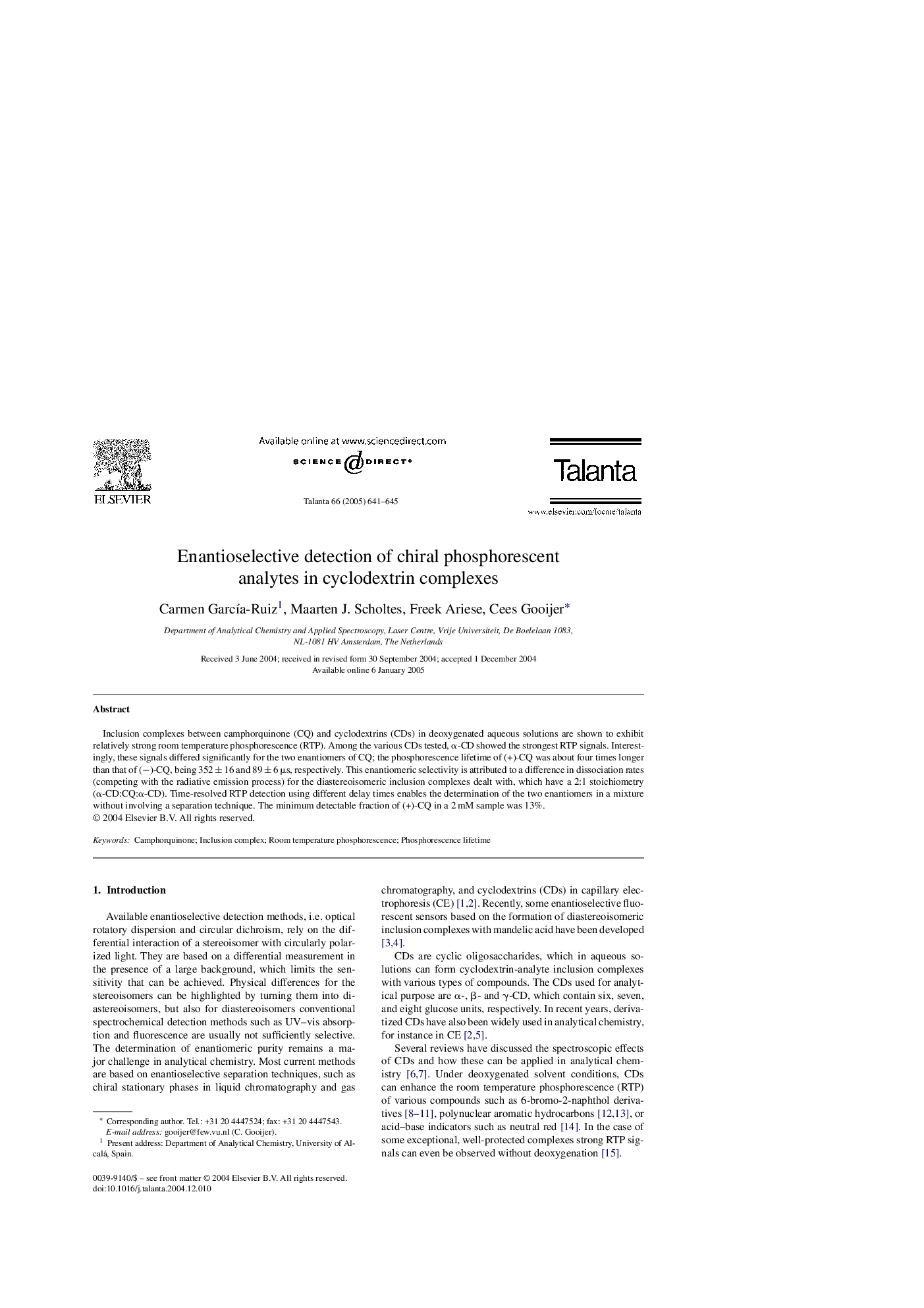| Article ID | Journal | Published Year | Pages | File Type |
|---|---|---|---|---|
| 10559961 | Talanta | 2005 | 5 Pages |
Abstract
Inclusion complexes between camphorquinone (CQ) and cyclodextrins (CDs) in deoxygenated aqueous solutions are shown to exhibit relatively strong room temperature phosphorescence (RTP). Among the various CDs tested, α-CD showed the strongest RTP signals. Interestingly, these signals differed significantly for the two enantiomers of CQ; the phosphorescence lifetime of (+)-CQ was about four times longer than that of (â)-CQ, being 352 ± 16 and 89 ± 6 μs, respectively. This enantiomeric selectivity is attributed to a difference in dissociation rates (competing with the radiative emission process) for the diastereoisomeric inclusion complexes dealt with, which have a 2:1 stoichiometry (α-CD:CQ:α-CD). Time-resolved RTP detection using different delay times enables the determination of the two enantiomers in a mixture without involving a separation technique. The minimum detectable fraction of (+)-CQ in a 2 mM sample was 13%.
Related Topics
Physical Sciences and Engineering
Chemistry
Analytical Chemistry
Authors
Carmen GarcÃa-Ruiz, Maarten J. Scholtes, Freek Ariese, Cees Gooijer,
